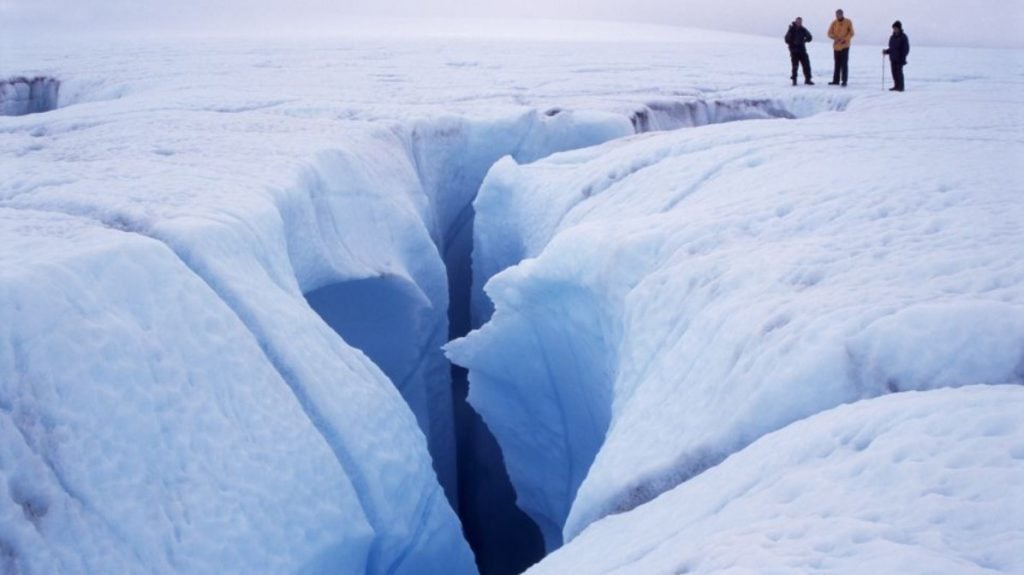The Greenland Ice Sheet may be even more unstable than scientists previously thought.
New research reveals how lakes on the surface of Greenland’s glaciers drain toward the bottom of the ice sheet within hours.

Although one of the largest glaciers seem to gain ice in Greenland, a newly released video of a rapidly draining lake on Greenland’s ice sheet dramatically shows why we should be concerned about the ice sheet’s instability.
The impressive event took place in July 2018 on Store Glacier in western Greenland. However some identical impressive phenomena have already been reported before.
In the latest case, the giant lake lost two-thirds of its volume in a mere 5 hours, gushing out the equivalent of 2,000 Olympic-size swimming pools.
The huge fracture that emptied the lake has remained and is now an easy conduit from the surface of the glacier to its base, half-mile (1 kilometer) below.
This water lubricates the bottom of the ice sheet, hastening its movement toward the sea.
Melt Water Lakes in Greenland
Since 1970, the number of meltwater lakes across Greenland’s ice has risen. The seasonal lakes have also started growing larger, and appearing at higher elevations.
Between a quarter and almost a half of these lakes experience rapid draining that sends their water deep into the ice. Such draining events very precisely are however local phenomena and do not represent events that affect the larger movements of the ice sheet.
But lakes tend to drain in clusters. The drainage of one lake can cause the ice surface to crack and fracture further, triggering other lakes to drain as well. The fractures left behind also act as conduits for further meltwater drainage, creating kilometer-tall waterfalls plunging into the ice.
Vanishing Act
On July 7, 2018, Christoffersen and his team were camped out near a meltwater lake called Lake 028 on Store Glacier when they noticed that the lake level was dropping fast.
A fracture had formed in the ice, and water was gushing into this fracture as it opened up.
The drainage was captured by a drone and the findings were published in PNAS.
Lake 028 didn’t disappear completely, but sent rapidly more than 1.26 billion gallons (4.77 billion liters) of water toward the base of the ice sheet, where it can do the most damage.
That means that scientists have been underestimating the ability of lakes to drain and create conduits that transfer water from the surface to the base of the ice sheet. [LiveScience]












I question this being an actual lake, or is it a tidal pool? If you look in the background around 1 o’clock just at the end of the video, you can see what appears to be tidal surges/waves as the tide comes in. Looks like this is possibly along the coastline, where water becomes trapped in low lying areas as the tide recedes.
At the start of the video, what appears to be water can be seen draining towards you from the lake into the narrow channel in the left foreground. As the lake water level lowers, the visual channel drainage stops as the visual lake water level drops.
Thankyou, AnneBrit.
people want to read more into things than there is. These ‘lakes’ have come and gone for centuries.
people love to be made ‘afraid’ through ‘fearporn’. they forget, water is heavier than ice which is why water finds a way through it. AND if there is a lot of water it is going to cause small fractures to become large fractures — simple logic, nothing new.
if a ‘melt water’ lake stays in place, it means that there are no small fractures in the ice through which the water can escape.
This ‘fearporn’ in our world has gotten totally outrageous and the millenials are so stupid they believe and buy into all of it.
must be by design?
Nah, it’s what glaciers always have done, messed with water. It’s us who have changed, and become more unstable.